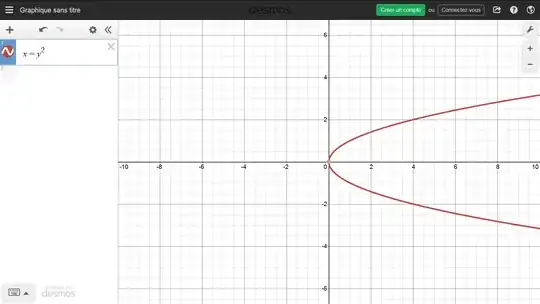I recently started reading a book which has challenged my understanding of functions and inverse functions quite a bit (mostly the format of the notations that are used); I know that we write a function $( f )$ that maps elements of its domain, $X$, to elements of its co-domain, $Y$, as:
$f:X\rightarrow Y \qquad x \mapsto y \qquad \text{where} \quad x\in X \quad \text{and} \quad y=f(x) \in Y $
$\\$
This is the point where my understanding starts to deviate from the book's content. The book goes on to define the inverse of the function $f$ as the map
$g:Y\rightarrow X \qquad y \mapsto x \quad \text{where} \quad y \in Y \quad x=g(y) \in X $
and then mentions that, since the map $g$ maps EVERY element of its domain ($Y$) onto its co-domain ($X$), it must be injective and since the same holds for the map $f$, we conclude that both $f$ and $g$ are bijective maps.
The problem with this statement, I feel like, is that it excludes the possibility of the co-domain being larger than the image of $f$ (it restricts the co-domain into being the image of $f$)
$\\$
$f:[-\pi/2,\pi/2] \rightarrow \mathbb{R} \quad \text{where} \quad x\mapsto f(x)=\sin x \qquad [1]$
this function is not invertible as it's not bijective (The co-domain isn't the same as the image of $f$)
whereas the function
$f:[-\pi/2,\pi/2] \rightarrow [-1,1] \quad \text{where} \quad x\mapsto f(x)=\sin x \qquad [2]$
is invertible. Is this correct? If it is, then, are we to say that the functions [1] and [2] are different functions? If it isn't, then doesn't that go against our definition and conditions for inverse functions?

About the statement: what are the assumptions on $f$? If $f$ is assumed bijective, then its image is $Y$. If it is assumed injective, then it still has an inverse, when we consider $f$ as a function onto its image (which, as you have remarked, is formally a different function).
– Randy Marsh Dec 09 '19 at 20:05